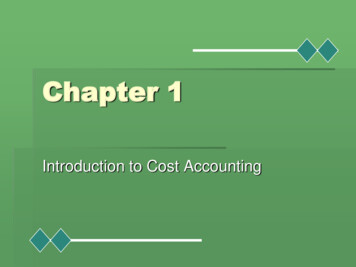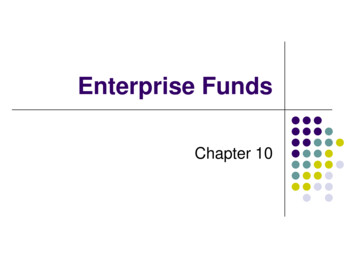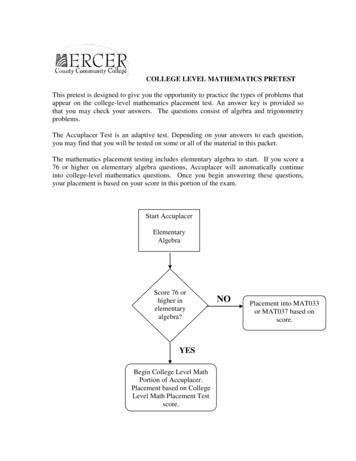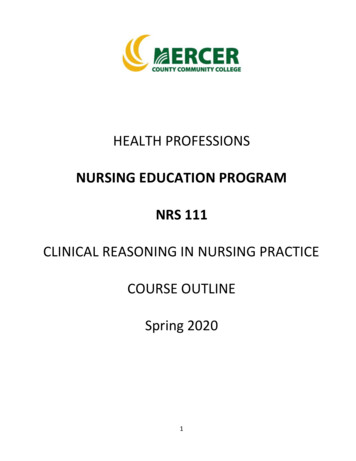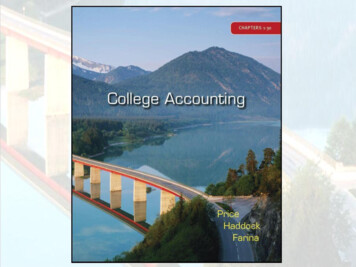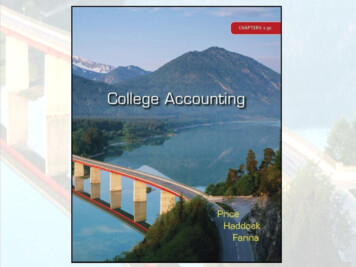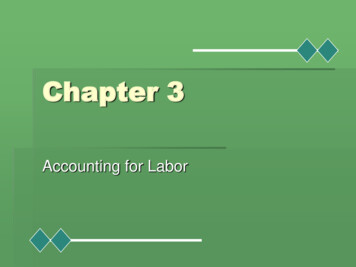
Transcription
Chapter 3Accounting for Labor
Learning ObjectivesLO1 Distinguish between features of hourly rateand piece-rate plans.LO2 Specify procedures for controlling laborcosts.LO3 Account for labor costs and payroll taxes.LO4 Prepare accruals for payroll earnings andtaxes.LO5 Account for special problems in laborcosting.
Payroll AccountingSystem for a Manufacturer1. Record the hours worked or quantity ofoutput by employees in total and by job,process, or department.2. Analyze the hours worked by employees todetermine how labor time is to be charged.3. Charge payroll time to jobs, processes,departments, and factory overhead.4. Prepare the payroll.
Direct Labor - Review Represents payrollcosts that aretraceable toindividual jobsworked on during theperiod. Direct labor costs aredebited to the work inprocess account.
Indirect Labor - Review Costs are incurred for avariety of jobs that arerelated to the productionprocess, but are notreadily identifiable withthe individual jobsworked on during theperiod. Indirect labor costs arecharged to factoryoverhead.
Hourly Rate Plan The employee’s wages are calculated bymultiplying the established rate per hourby the number of hours worked. This plan does not provide an incentivefor the employee to achieve a high levelof productivity.
Piece-Rate Plan Employee’s wages based on theemployer’s quantity of production. Number of units produced is multiplied bya predetermined rate. May be referred to as incentive wageplan or piece-rate plan. Quality may be sacrificed in order tomaximize quantity.
Modified Wage Plan Minimum hourly wage is set even if an establishedquota is not attained. If quota is exceeded, a bonus is added to theminimum wage level. On days when the quota is not met, the difference(make-up guarantee) would be charged to factoryoverhead. When production work teams are utilized, a singleincentive for the group would be appropriate.
Labor Time Records Given the magnetic card readingtechnology available today, the timerecord typically takes the form of acomputer file. The labor hours recorded should bereviewed by a production supervisor foraccuracy.
Payroll Function Primary responsibility is to compute the wagesand salaries earned by the employees. Forms should include a payroll record andemployees’ earnings records. A summary of the payroll is sent to accounting torecord the payroll in the accounting records. The payroll record is sent to the treasurer’sdepartment for making payments to employees.
Payroll Records Forms used by companies will vary, but allforms possess some common characteristics. Entry to record payroll.PayrollXXFICA Tax PayableXXEmployees Income Tax PayableXXHealth Insurance PayableXXEmployee ReceivableXXWages PayableXX
Employee EarningsRecords Company maintains a record of theearnings for each employee. The cumulative record of earnings isneeded to compute earnings subject tomany types of taxes. Information is also used to prepare FormW-2 and Form W-3.
Payment of Net Earnings Accounting department sends the payrollrecord to the treasurer’s office. The treasurer’s office is responsible for makingthe payments to employees.Wages PayableXXCashEntry to pay employees.XX
Recording Salaries andWages Labor-time records are sent to the payrolldepartment on a daily basis. The labor costs are charged to the appropriatejobs or departments and factory overhead. This analysis is recorded on a labor cost summary,in the job cost ledger, and in the factory overheadledger. Earnings of salaried employees are recorded inthe factory overhead ledger accounts and on thelabor cost summary.
Labor Cost Summary Hourly workers should be recording their timeon a labor time record. Labor costs are recorded on a labor costsummary. This summarizes the direct labor and indirectlabor charges to a department for the period. Salaried employees are often not required toprepare labor time records.
Flow of Costs from SubsidiaryRecords to General LedgerLabor – TimeRecordsJob Cost Sheets(Direct Labor)Factory OverheadSheets(Indirect Labor)Labor CostSummary(Direct and IndirectLabor)General Journal andGeneral Ledger(WIP-Direct LaborFOH-Indirect Labor)
Employer’s Payroll Taxes Federal InsuranceContributions Act(FICA) FederalUnemployment TaxAct (FUTA) State UnemploymentTax Act (SUTA)
Payroll Accrual When the end of the period does not coincidewith the ending date for a payroll period, anaccrual for payroll earnings should be made.PayrollXXWages PayableEntry to record accrual of payroll.XX
Illustration of Accountingfor Labor Costs PayrollxxFICA Tax PayableEmployees Income Tax PayableHealth Insurance Premiums PayablexxWages Payable General Journal Entry to Record PayrollCash xxxxWork in ProcessFactory OverheadSales SalariesAdministrative Salaries xxRecord Payment of Net Earnings to EmployeesWages Payable xxxxxxxxxxxxPayroll Distribution of PayrollxxEmployer’s Payroll TaxesFactory OverheadxxPayroll Tax Expense – Sales Salaries xxPayroll Tax Expense – Admin Salaries xx FICA Tax PayableFederal Unemployment Tax PayablexxState Unemployment Tax Payablexxxx
Special Labor CostProblems Shift Premiums Employee PensionCosts Bonuses Vacation and HolidayPay
Accounting for Bonuses,Vacations, and Holiday PayWork in ProcessXXFactory Overhead (Bonus)XXFactory Overhead (Vacation)XXFactory Overhead (Holiday)XXPayrollXXBonus LiabilityXXVacation Pay LiabilityXXHoliday Pay LiabilityXXIncurred payroll and bonus, vacation, and holiday pay.
Chapter 3 Accounting for Labor. Learning Objectives LO1 Distinguish between features of hourly rate and piece-rate plans. LO2 Specify procedures for controlling labor costs. LO3 Account for labor costs and payroll taxes. LO4 Prepare accruals for payroll earnings and taxes. LO5 Account for special problems in labor costing. Payroll Accounting System for a Manufacturer 1. Record the hours worked .
